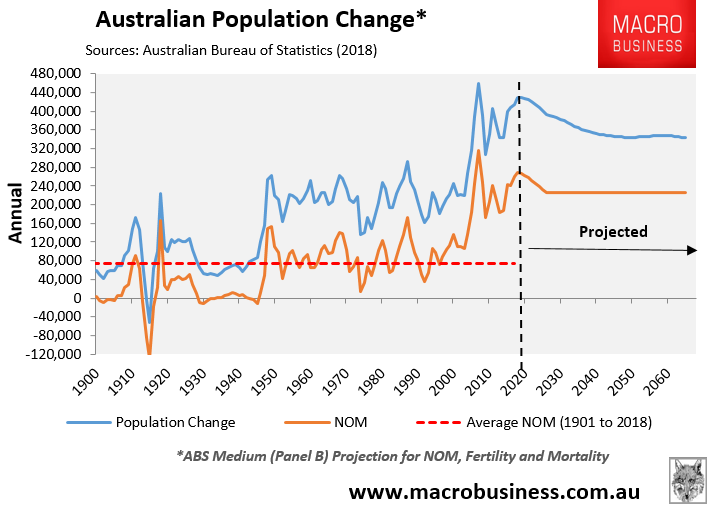While almost all recent opinion polls show the majority of Australians want immigration to be lowered, including:
- Australian Population Research Institute: 54% want lower immigration;
- Newspoll: 56% want lower immigration;
- Essential: 54% believe Australia’s population is growing too fast and 64% believe immigration is too high;
- Lowy: 54% of people think the total number of migrants coming to Australia each year is too high;
- Newspoll: 74% of voters support the Turnbull government’s cut of more than 10% to the annual permanent migrant intake to 163,000 last financial year; and
- CIS: 65% in the highest decile and 77% in the lowest believe that immigration should be cut or paused until critical infrastructure has caught up.
The Scanlon Foundation has released its 2018 Mapping Social Cohesion Report, which claims that a small majority of Australians support immigration at its current level:
Of the 1500 people interviewed for the annual survey, about 43 per cent thought immigration was “too high” — an increase of nine per cent compared to two years ago.
But a majority of 52 per cent still thought immigration was “about right” or “too low”.
Report author Professor Andrew Markus of Monash University said… “The central message is, even though there are heightened concerns, immigration is not something that should be abandoned.”
Concerns about immigration also appear to be linked to other issues.
About 54 per cent were concerned about the impact of immigration on overcrowding in Australian cities, 50 per cent were concerned about the impact of immigration on house prices and 48 per cent had a negative view of the way Australian governments were managing population growth.
I love the strawman argument used by Andrew Markus: “immigration is not something that should be abandoned”. Nobody – not even Pauline Hanson – is calling for immigration to be abandoned. Rather, opponents to a ‘Big Australia’ just want immigration lowered to something more akin to historical norms:

It must also be noted that there are question marks about the methodology used by Scanlon, when compared against the other surveys, as explained by the Australian Population Research Institute (APRI) last year:
- The TAPRI survey was completed online by a random sample of 2057 voters, (with quotas set with a 10% leeway, in line with ABS distributions for age, gender and location). The sample was drawn from a panel of 300,000. Thus, TAPRI used the same methodology as is now employed by Newspoll and by Essential Media.
- The Scanlon poll was based on a telephone sample of 1,500 Australian residents drawn from the entire population of residents. It therefore included many respondents who are not citizens and therefore not eligible to vote.
- There are significant issues concerning the reliability of telephone interviews when probing sensitive issues. As the highly credible Pew Research polling organisation has indicated, respondents may be more likely to provide socially undesirable responses in the relative anonymity of the internet.
- Scanlon found a much larger share of respondents favoured a reduction in immigration numbers in a different online survey that it funded which used methodology similar to that used by TAPRI. In the telephone survey 37% said that immigration was too high. In contrast, 50% of this online sample agreed that the immigration intake was too high, rising to 53% when the findings were limited to those who were Australian citizens. This result is almost identical to the TAPRI finding.
So, Scanlon’s survey captures the views of migrant non-citizens that are ineligible to vote. It is also conducted via telephone, where honest answers are less likely because of fears of being labelled as ‘racist’ or ‘xenophobic’.

